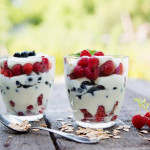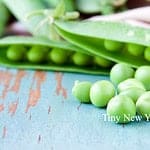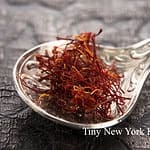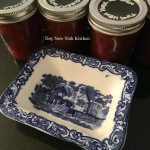Ice Tea or Iced Tea? It depends on where you live. In the South, it’s called ice tea and everywhere else it’s called iced tea.
Iced tea did not take its current form until the popularity of black tea took off, thanks to the work of the Indian Tea Commission at the St. Louis World’s Fair in 1904. As the legend goes, Richard Blechynden, the head of the commission, watched the fairgoers pass by his elaborate teahouse as the sweltering temperatures made hot beverages unpalatable. Driven to increase the market for Indian black tea in the States, he hit upon the idea of not only serving it iced, but also perhaps more importantly, giving it away for free. His booth was soon the most popular at the fair as the patrons found his golden beverage to be the perfect refreshment.
Spurred on by his success in St. Louis, Blechynden toured the country, giving away more and more iced tea, quickly spreading its popularity nationwide. Brewing the perfect iced tea at home, complete with sweet and often fruity syrups, soon became the hallmark of a great hostess. Iced tea was mixed with all sorts of flavors in delicious punches; lemon, mint, strawberries, cherries, and oranges, whether fresh, preserved, or in syrup form or, for the more mature palette, brandy and bourbon to give it a little extra kick. And though few still have time for such an elaborate and time-consuming production (early recipes recommend beginning to brew tea at breakfast for service at dinner), iced tea remains an American favorite, available in bottles, cans, and even from a soda fountain.
To make iced tea use double the amount of tea or teabags that you would use for hot tea when you’re planning to chill the drink. And allow the tea to come to room temperature before you put it into the refrigerator. Fill an ice cube tray with tepid tea and freeze for ice that won’t dilute your drink. You could also float some minced mint or fruit in the cubes for a special treat.
“Work With What You Got!”
© Victoria Hart Glavin Tiny New York Kitchen © 2017 All Rights Reserved
Happy Independence Day!
Just one of the many things I love about living on the East Coast…the beauty of the light in between thunderstorms.
Probably the first vegetable to be cultivated by man, ancient peas and beans have been found in settlements from the late Stone Age onwards (nearly 8,000 years ago). They are a highly nutritious vegetable, containing essential carbohydrates and proteins, as well as useful supplies of vitamins and minerals. They were particularly valuable to ancient man as they could be dried and stored, which meant that food was available throughout the year.
Garden Peas: These are one of the delights of summer, although they are one of those vegetables that are best when absolutely fresh. Pick your own (if you don’t grow them yourself) is the best way to enjoy peas at their best. There are many varieties of peas, some of which can be eaten whole, including the pod. Peas are one of the few vegetables that taste almost as good when frozen. Because freezing takes place soon after picking, frozen peas often have a higher nutritional content than fresh, and are available all year round.
Mangetouts: These are eaten whole and are valued for their pods, rather than the peas, which never mature. Mangetouts have a delicate, sweet flavor. To prepare, young, freshly picked mangetouts simply need to be topped, tailed, and washed. They should be cooked only briefly to retain their delicate, mild flavor and crisp bite. They can be blanched or stir-fried and are also good served raw in salads.
Petits Pois: These are not, as you might expect, immature peas, but are a dwarf variety. They are wonderfully tender and have a sweet, delicate flavor. Gardeners grow their own, but petits pois are not widely available fresh in the shops as they are mainly grown commercially for canning or for freezing.
Snow Peas/Sugar Peas/Sugar Snap Peas: These have the distinct fresh flavor of raw peas and are plumper and have more “snap” than mangetouts. They are delicious added raw to salads. They are also good steamed or boiled, but should only be cooked for about 1 minute or they will lose their wonderful flavor and texture.
Buying And Storing: Only buy really fresh peas. If they are old they are bound to be disappointing. In top condition, the pods are bright green and lively looking. The more withered the pod, the longer ago they were picked. Use fresh peas as soon a possible.
www.tinynewyorkkitchen.com
“Work With What You Got!”
© Victoria Hart Glavin Tiny New York Kitchen © 2017 All Rights Reserved
Saffron
Highly prized as a dye, medication and culinary spice since Greek and Roman times, saffron is the stigma of a type of crocus, Crocus sativus, which was once grown all over Europe, including in England. It has a distinctive and lasting aroma, and a pleasant pungency if used sparingly. Because of its striking color, as well as its distinctive flavor, saffron is frequently added to celebration dishes; for example, pilaus from India, Spanish paella and Italian risotto Milanese. Bouillabaisse, the famous French fish and shellfish soup-stew, is flavored with saffron. The spice is also widely used in sweet recipes, including milky rice and sweet custard-like desserts. Baked goods flavored with saffron include breads and cakes.
Saffron threads can be infused (steeped) in a little warm water or milk until the color of the liquid is even. Add the liquid and the threads to the dish, usually towards the end of the cooking process. Saffron powder can be added to food without soaking, but not to hot oil.
“Work With What You Got!”
© Victoria Hart Glavin Tiny New York Kitchen © 2016 All Rights Reserved
Picked Up This Antique Blue & White English Dish Today. I Absolutely Love It! ???












